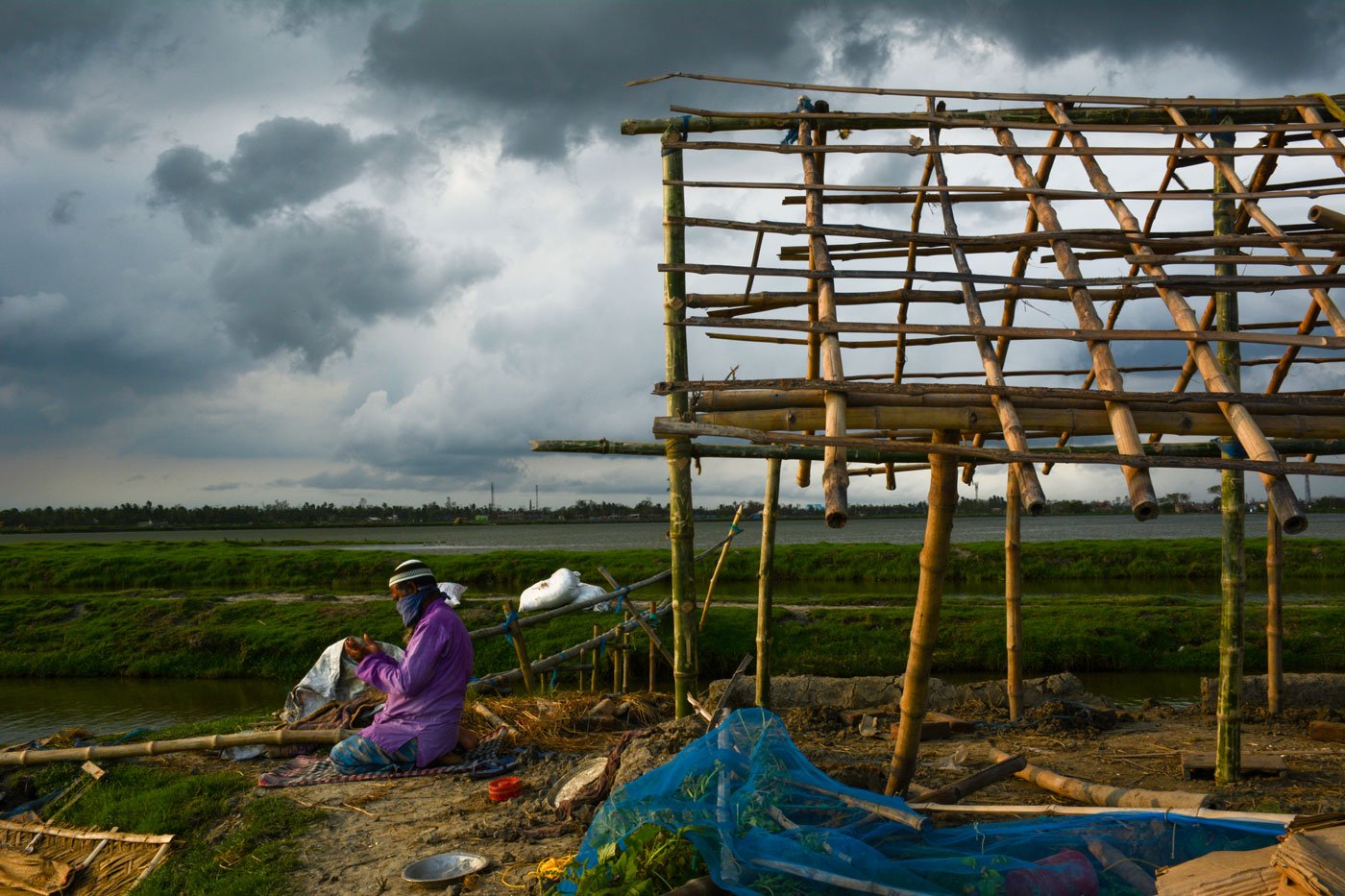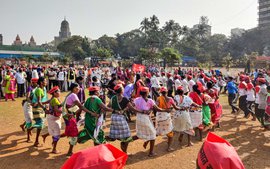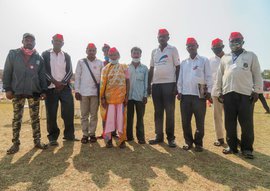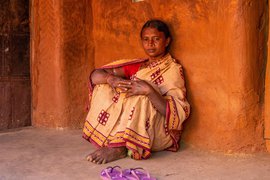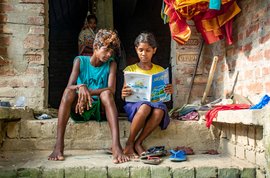“Now that the storm is over, we have been asked to go,” Amina Bibi, a resident of Kalidaspur village, had told me at the end of May. “But where should we go?”
A day before that storm, Cyclone Amphan, made landfall around 150 kilometres from Amina’s village in South 24 Parganas district of West Bengal, local authorities had evacuated families in several villages and housed them in relief camps. Amina and her family were moved to makeshift rooms in a neighbouring village on May 19 this year.
The cyclone swept away Amina’s mud house in her village of around 5,800 people in Gosaba block, located in the Sundarbans. All her belongings were swept away too. Amina, 48, her husband Mohammad Ramzan Molla, 56, and their six children, ages ranging from 2 to 16, managed to stay safe.
Mohammad Molla had returned to the village just two weeks before the cyclone struck. The 56-year-old worked as a cleaner at a mall in Pune, Maharashtra, earning Rs. 10,000 a month. This time, he had planned to stay back and open a tea stall in the nearby Molla Khali bazaar.
Amina used to add to the family income by setting out to catch crabs and fishes in the nearby Gomor river, after finishing her house work. She would sell her modest catch in the bazaar. “But I didn’t even earn Rs. 100 a day for that,” she had told me.
Raquib Ali, their oldest child, dropped out of school in 2018 when he was 14. “We cannot survive on the money abba sends home,” he said. “That is why I left to work.” Raquib earned Rs. 5,000 a month as a helper in a tailoring shop in Kolkata. He was back home when Amphan struck during the Covid-19 lockdown.
The family’s mud house with a thatched roof stood on the banks of the river Gomor. With each cyclone that hit them – Sidr (2007), Aila (2009) and Bulbul (2019), the river inched closer to their home and slowly submerged their entire three bigha (one acre) land, where they cultivated paddy once a year, along with a few vegetables. By the time Amphan came, they did not have any land left.
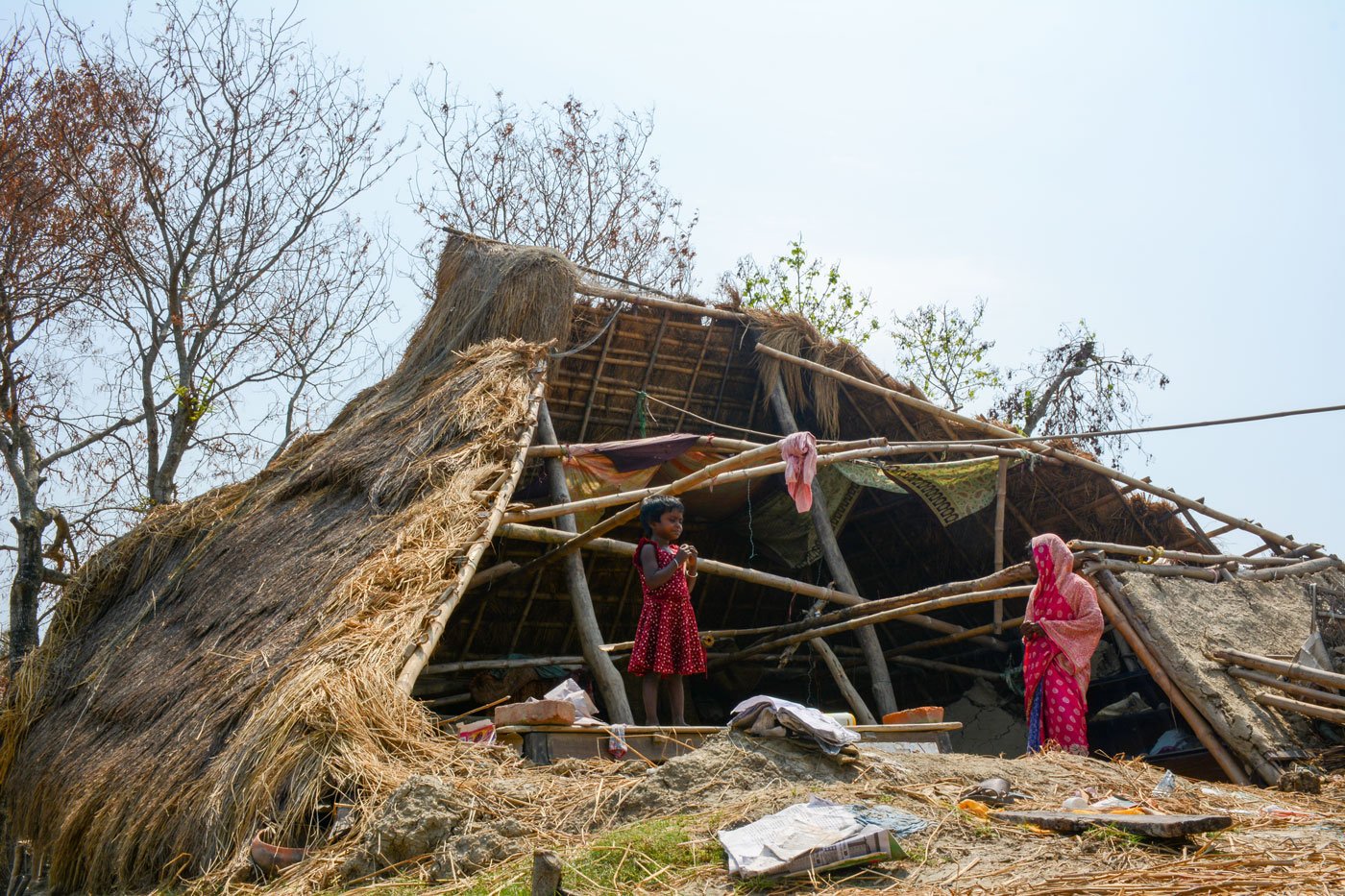
Amina Bibi stands near her ravaged home with her seven-year-old daughter Reshma Khatun
Before Amphan once again flooded the village’s houses home and fields with swathes of saline water on May 20 this year, Amina’s family – as well as many others – were temporarily resettled in Chhota Molla Khali village, on the breached embankments of rivers Bidyadhari and Gomor. The state government and local NGOs distributed cooked food and water pouches to the families. The makeshift rooms were crowded and had no electricity, and there was no place to follow physical distancing – at a time of the Covid-19 pandemic.
“How long will they stay here? One month, two months – then [where will they go]?” asked Chandan Maity, secretary of the Sundarban Nagarik Mancha, a local organisation that was distributing food in the relief camp. “The men – even the young people – will have to move in search of livelihoods. Those who cannot migrate will be left behind to survive on fish, crabs and honey, [or depend] on the rivers and jungles.”
Over the last two decades, residents of the Sundarbans region have increasingly lost acres of cultivable land to the saline waters brought in by high tides, floods and cyclones. A 2020 study by the World Wildlife Fund notes that nearly 85 per cent of the region’s residents cultivated a single paddy crop each year. But salinity destroys the soil’s productivity and causes fresh water ponds to dry up, depleting freshwater fish species. It takes years for the land to be fit for cultivation again.
“The water will stagnate on the fields for 10 to 15 days,” said 52-year-old Abu Jabayyer Ali Shah of Baliara village on Mousuni island, in Namkhana block. Because of the salt, there will be no crops on this land, and neither will the ponds have fishes.” Ali Shah is a shrimps’ trader; he buys them from villagers who catch shrimps in nearby rivers, and sells them to local vendors.
He and his family – wife Rokeya Bibi, 45, a homemaker, who earns a bit by doing embroidery work sometimes, and their two children at home – depend also on the money that their oldest son, 24-year-old Saheb Ali Shah, sends back. Saheb works as a mason in Kerala. “He is building other’s people’s houses there, and his own house is being washed away here,” Abu Jabayyer said.
Between 2014 and 2018, 64 per cent of all migration from the Sundarbans region was caused by economic distress, as agriculture became unsustainable, says a study done by Delta Vulnerability and Climate Change: Migration and Adaption – an ongoing research project of the UN’s Food and Agricultural Organization. Similarly, a survey of 200 households in the Sundarbans by Avijit Mistri (assistant professor at Nistarini Women’s College, Puruliya, West Bengal) found that at least one member in nearly three-fourth of the surveyed households has migrated to other districts and states in search of work.
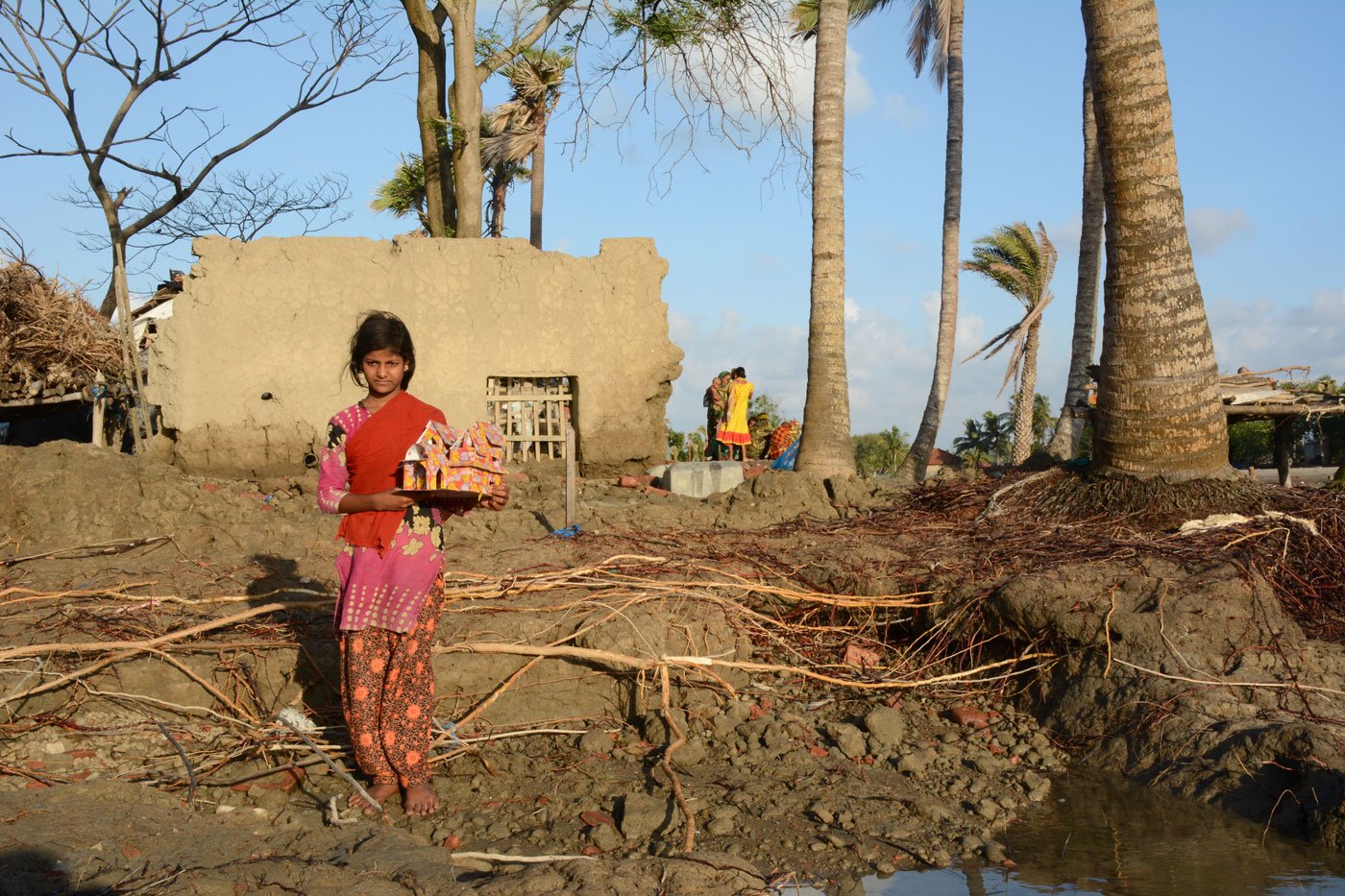
Abu Jabayyer Ali Shah and Rokeya Bini of Baliara village on Mousuni island in South 24 Parganas district lost their house too. Here, their daughter Asmina Khatun, 14, with a house made of cards by her elder brother, Saheb Ali Shah, 19, who works as a mason in Kerala
Many children in the region have had to give up their studies due to migration, observes Pobitra Gayen, a primary school teacher in Gosaba block’s Kumirmari village. “Just like the river is slowly consuming our houses and lands, the realm of education is slowly losing students,” she said.
“The situation improved slightly in the last 3 to 4 years [after Cyclone Aila in 2009],” said Sanjib Sagar, the
pradhan
of the Ghoramara
panchayat
. “Many migrants returned [to the Sundarbans region] and began farming, rearing fish in ponds, or started small businesses. But first Bulbul, and then Amphan finished everything.”
In the adjacent North 24 Parganas district, Nazrul Molla, 56, and his six-member family just about survived Cyclone Amphan, which washed away their mud-and-thatch house. Molla too worked as a mason in Kerala, and had returned home to Uchildaha village in Minakhan block around a month before Amphan, due to the Covid-19 lockdown.
On May 21, the day after the cyclone, Nazrul went to collect plastic sheets – which local authorities were distributing – to use as a roof. By the time it was Nazrul’s turn, the sheets had run out. “We are worse than beggars now,” he had told me. “This Eid [on May 24] will pass under the sky.”
In Gopalnagar Uttar village in Patharpratima block, 46-year-old Chhabi Bhuniya clutched a broken photo frame of her father Sankar Sardar, who died when their hut collapsed in 2009, during Cyclone Aila. “Not only did this cyclone [Amphan] take away our house, it has also separated me from my husband [due to disruptions in mobile networks],” she said.
Sridam Bhuniya, Chhabi’s husband, migrated to Tamil Nadu shortly after Cyclone Aila. He worked as a waiter at a restaurant there, and could not return home due to the sudden lockdown. “The last time we spoke was two days ago,” Chhabi had said when I spoke to her in May. “He told me that he was in great distress – he had run out of food and money.”
Standing on an embankment along river Mridangabhanga (locally called Gobodia) in Gopalnagar Uttar, village veteran Sanatan Sardar, around 88 years old, said, “Years ago, flocks upon flocks of migratory birds would visit this place [the Sundarbans]. They don’t come anymore. We have now become the migratory ones.”
Postscript: When this reporter met Amina Bibi and her family again on July 23, they had moved back to their village. The water had receded, and they had rebuilt a makeshift hut with bamboos and plastic sheets. Ramzan was still at home and unable to leave for work due to the lockdown restrictions. He no longer has the money to start his own tea stall.
Nazrul Molla and his family, as well as the others, had also tried to re-construct their broken houses and lives as best as they could.
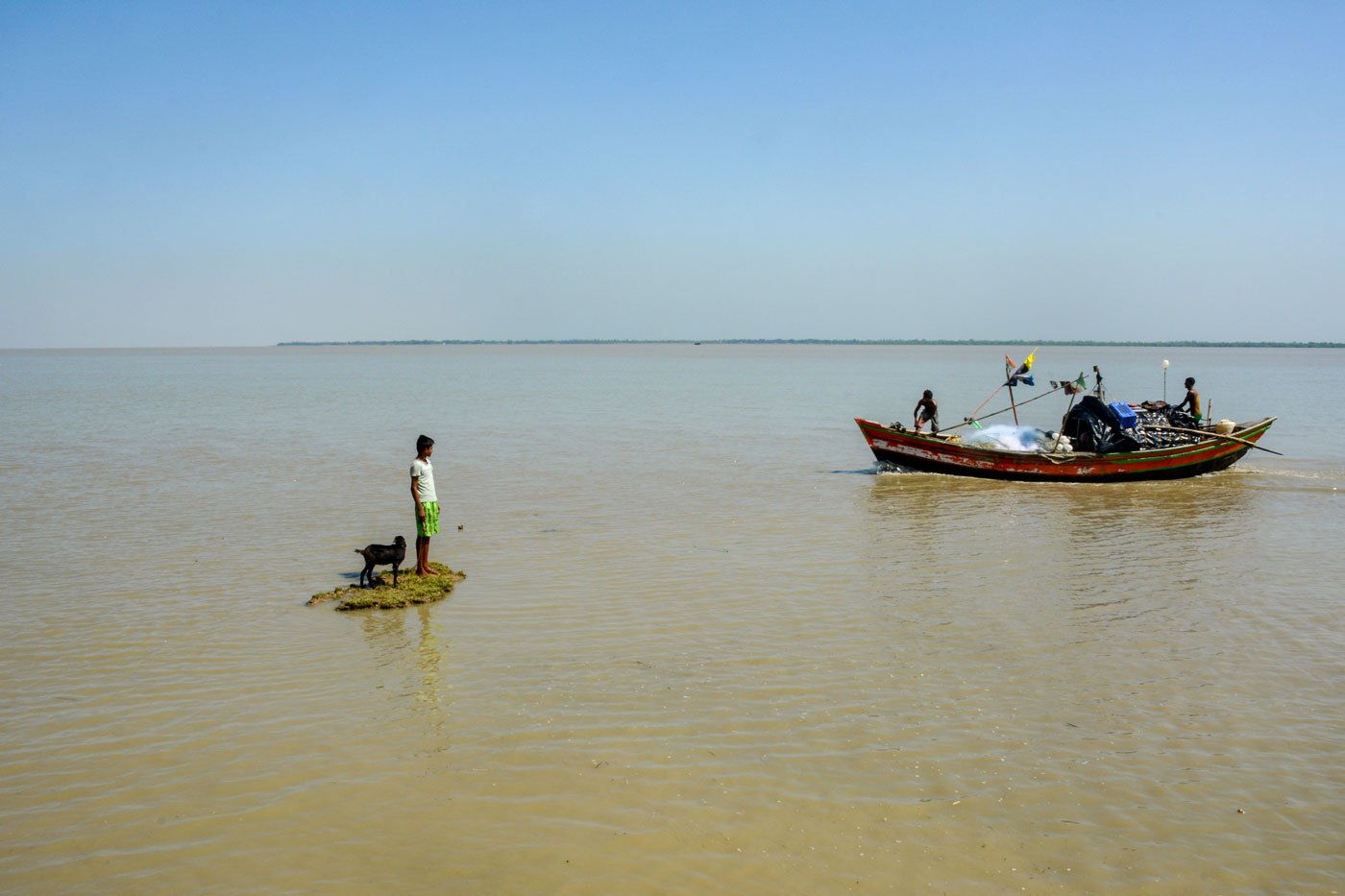
' How long can you watch your land erode and livelihoods getting lost?' asks Azgar Ali Shah, 15, a Class 9 student of Chunpuri village of Ghoramara island. His entire village was submerged in the cyclone.
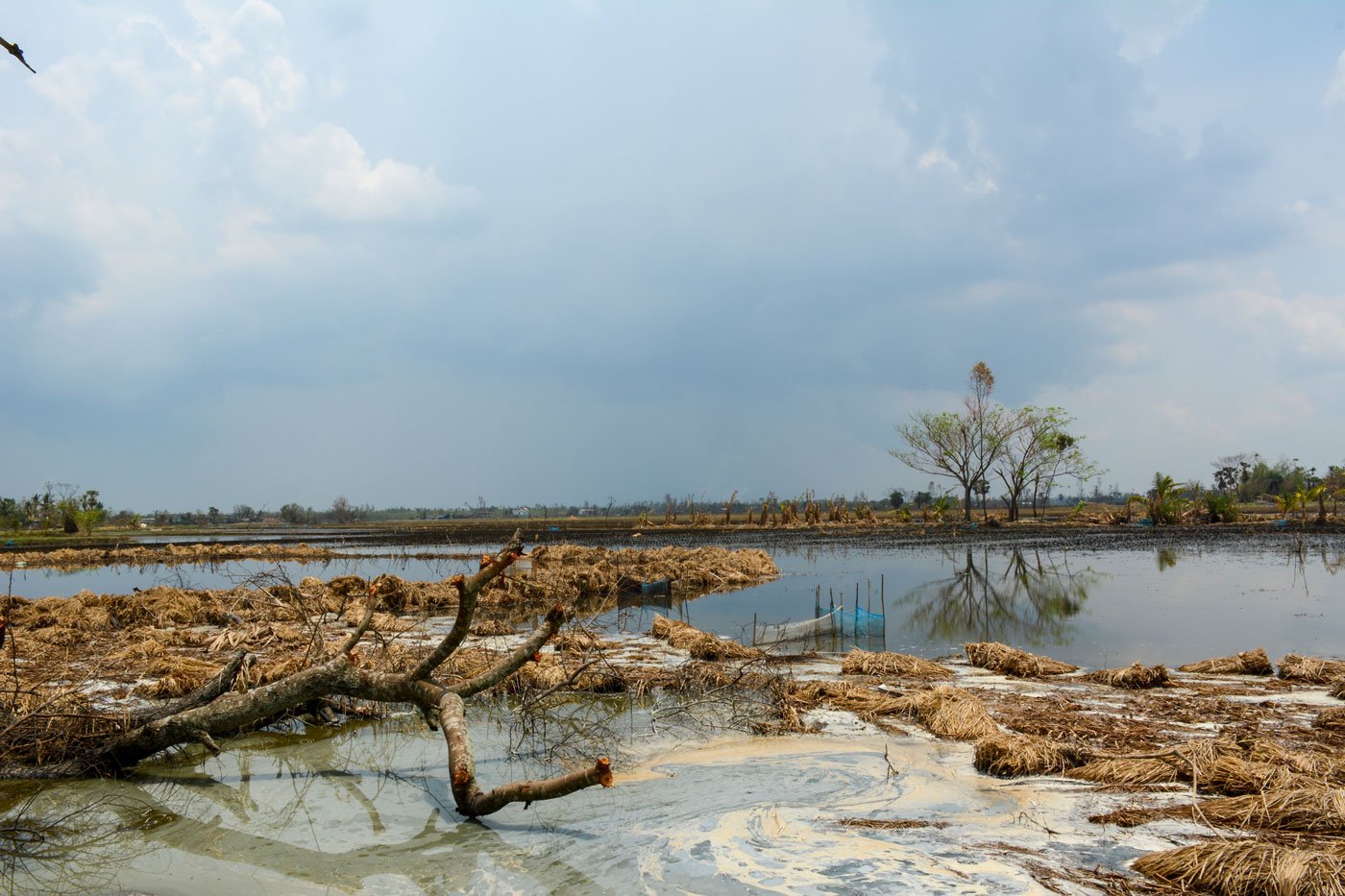
Puinjali village, Tuskhali-Amtali island, Gosaba block: a cres of cultivable land was inundated with water after Cyclone Amphan on May 20.
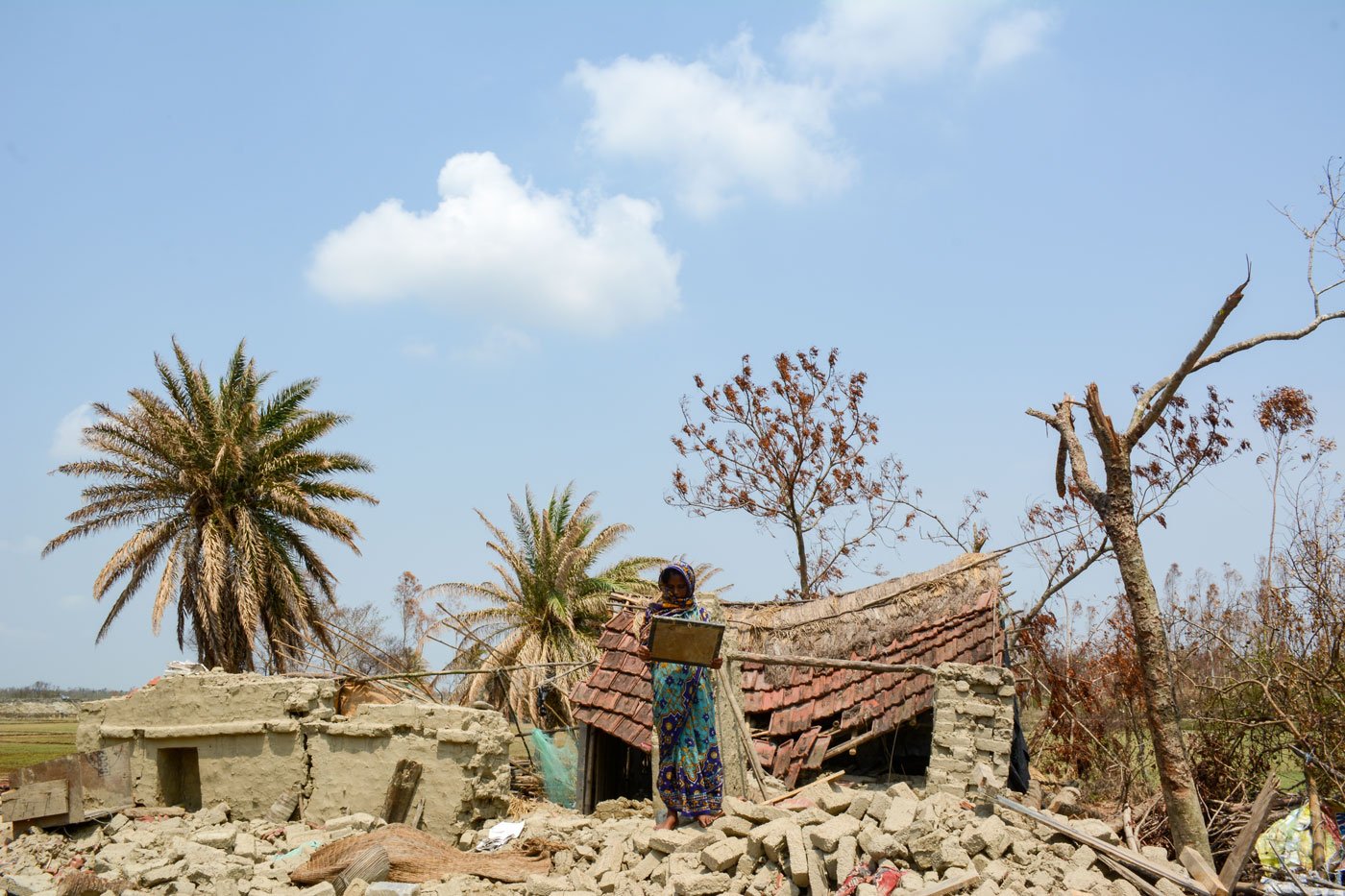
In Gopalnagar Uttar village in Patharpratima block, 46-year-old Chhabi Bhuniya clutches a broken photo frame of her father Sankar Sardar, who died when their hut collapsed in 2009, during Cyclone Aila.
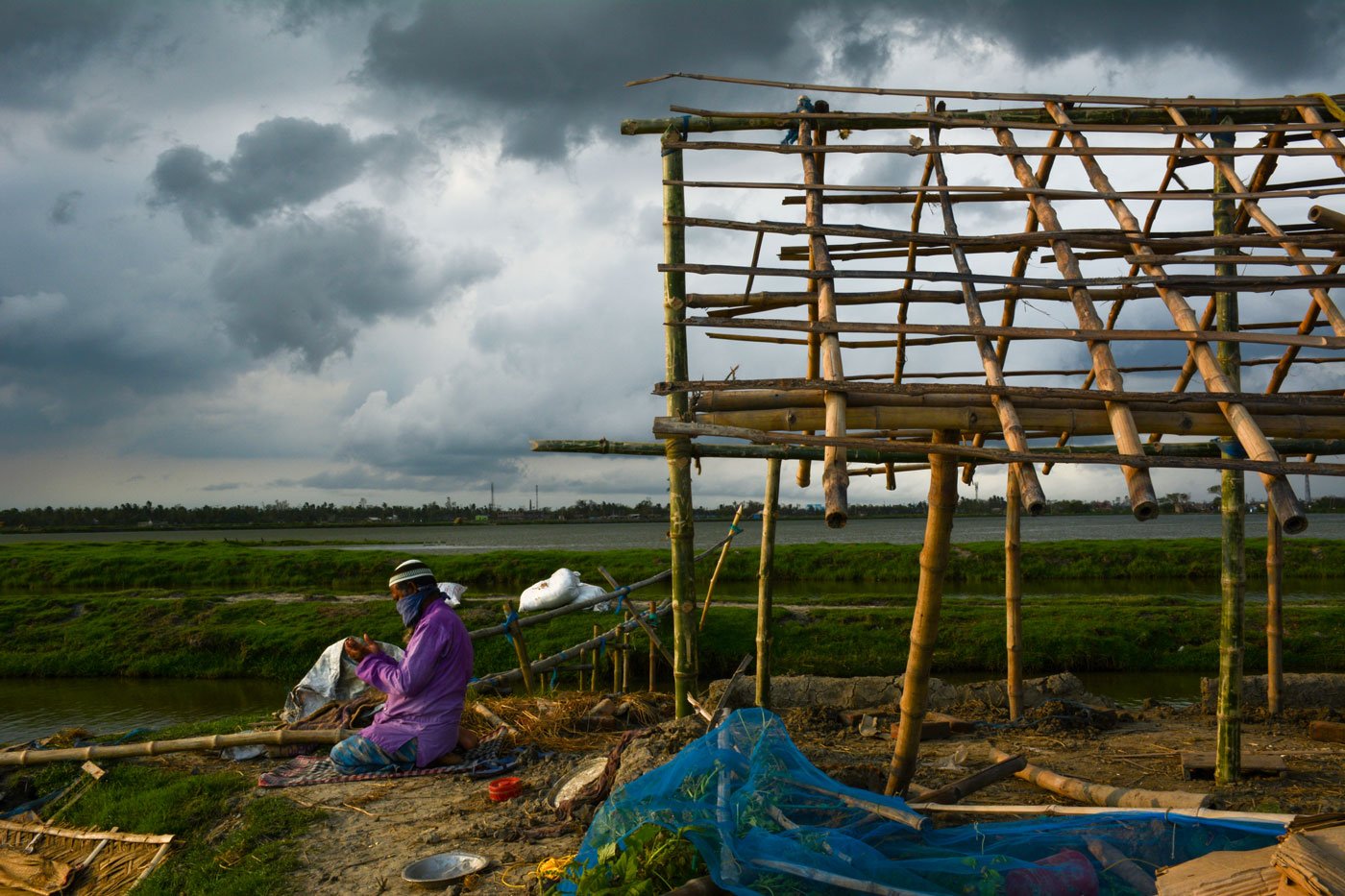
Nazrul Molla worked as a mason in Kerala, and had returned home to Uchildaha village in Minakhan block around a month before Amphan, due to the Covid-19 lockdown.
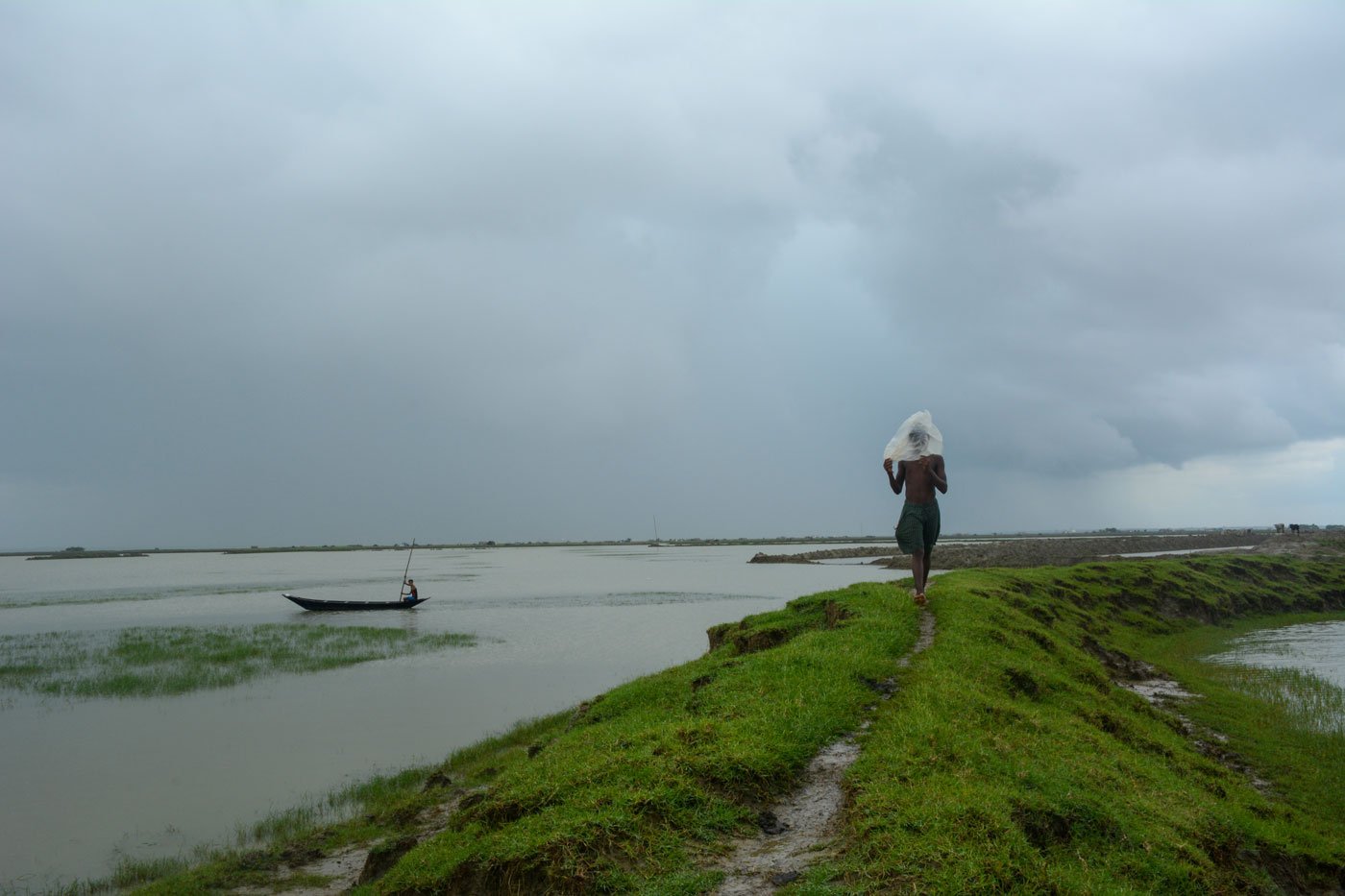
Suvankar Bhuniya, 14, works as a night guard in a fishery in Purba Medinipur district. His father Bablu Bhuinya, 48, works as a construction worker in Kerala.
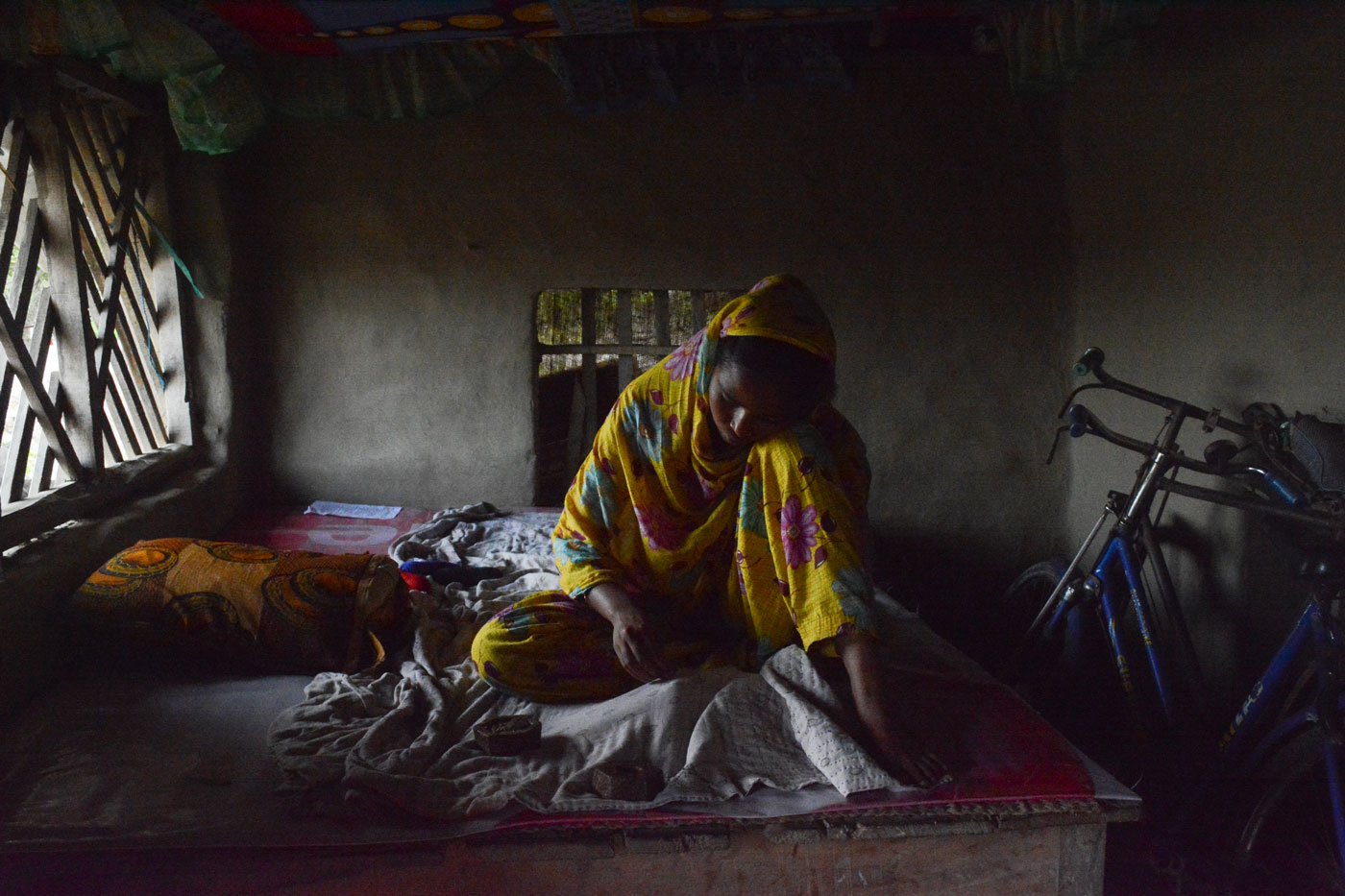
Tahomina Khatun, 21, of Chunpuri village on Ghoramara Island, weaving a quilt in a relief camp. She catches baby shrimps in the Muriganga river during the high tide, for which she earns less than Rs. 100 a day. Her parents work as migrant labourers in a fishery in Andhra Pradesh.
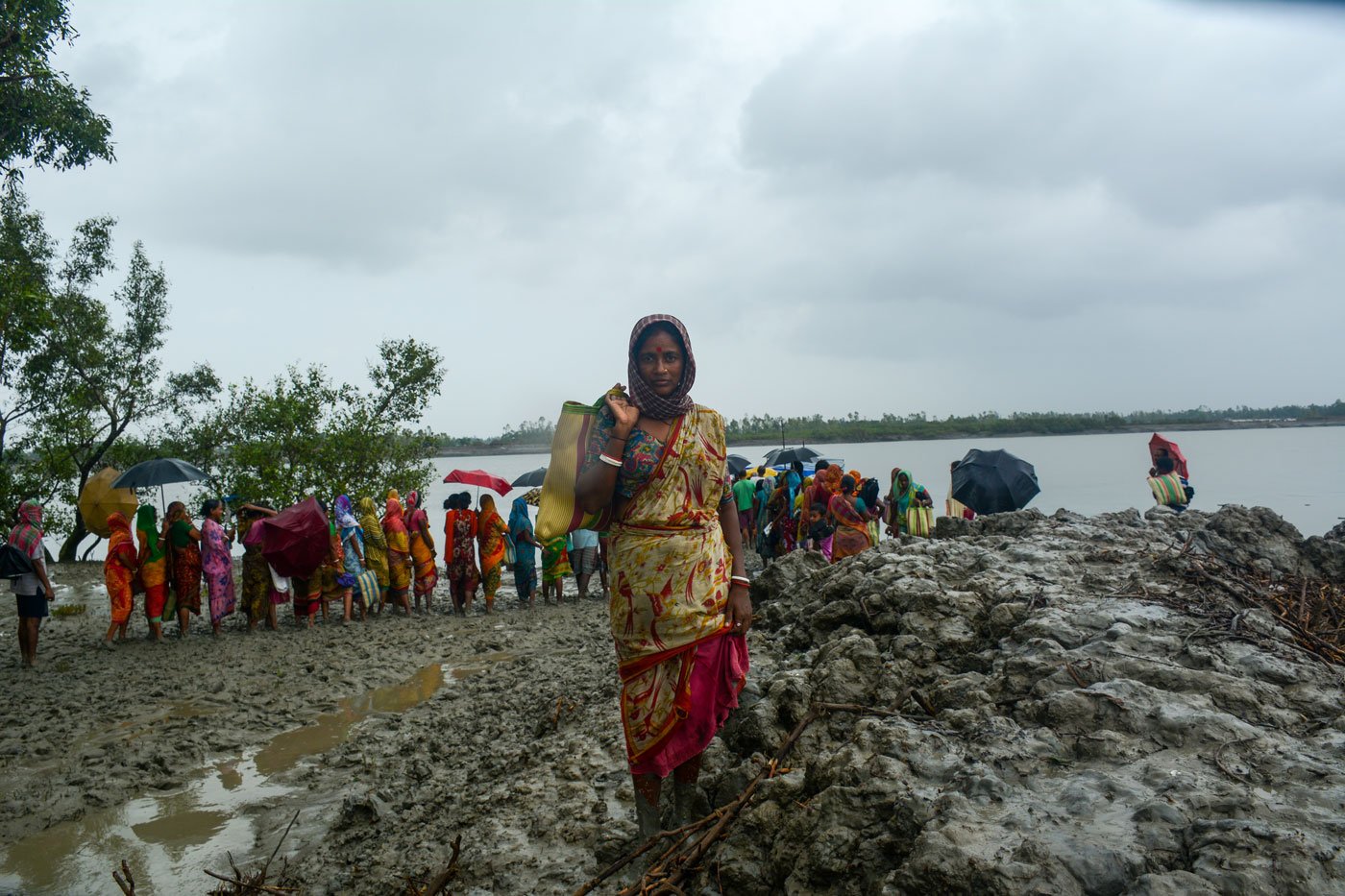
In Rangabelia village of Gosaba block, Jamuna Jana and others received rations and other items from a local organisation after Cyclone Amphan.
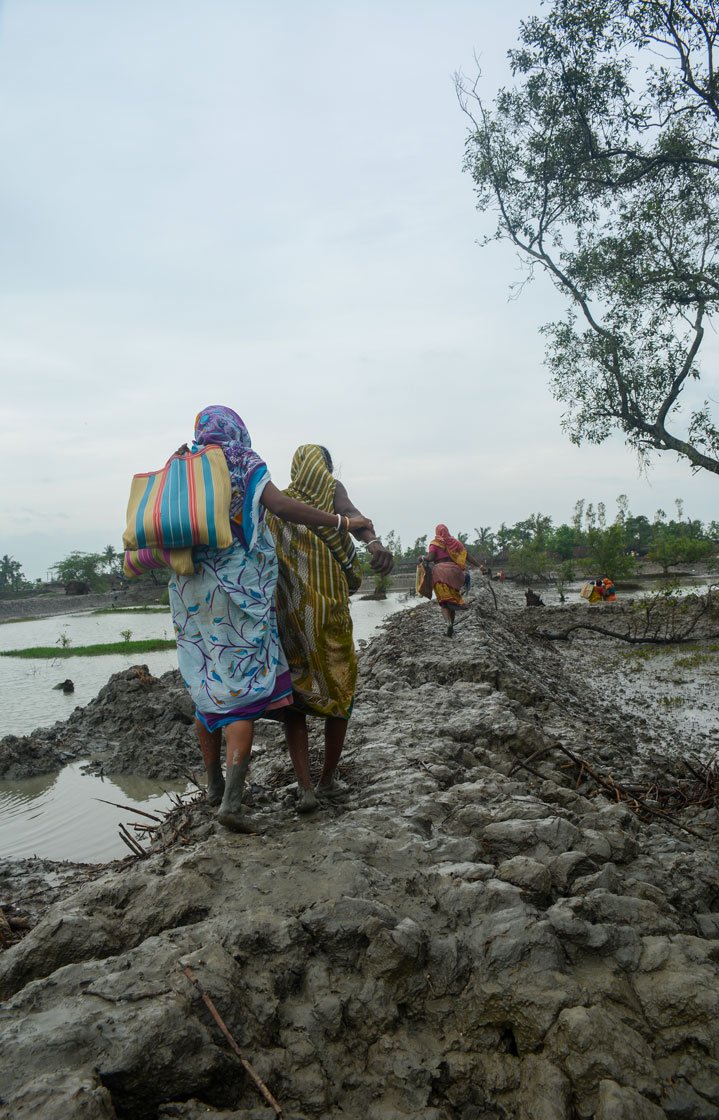
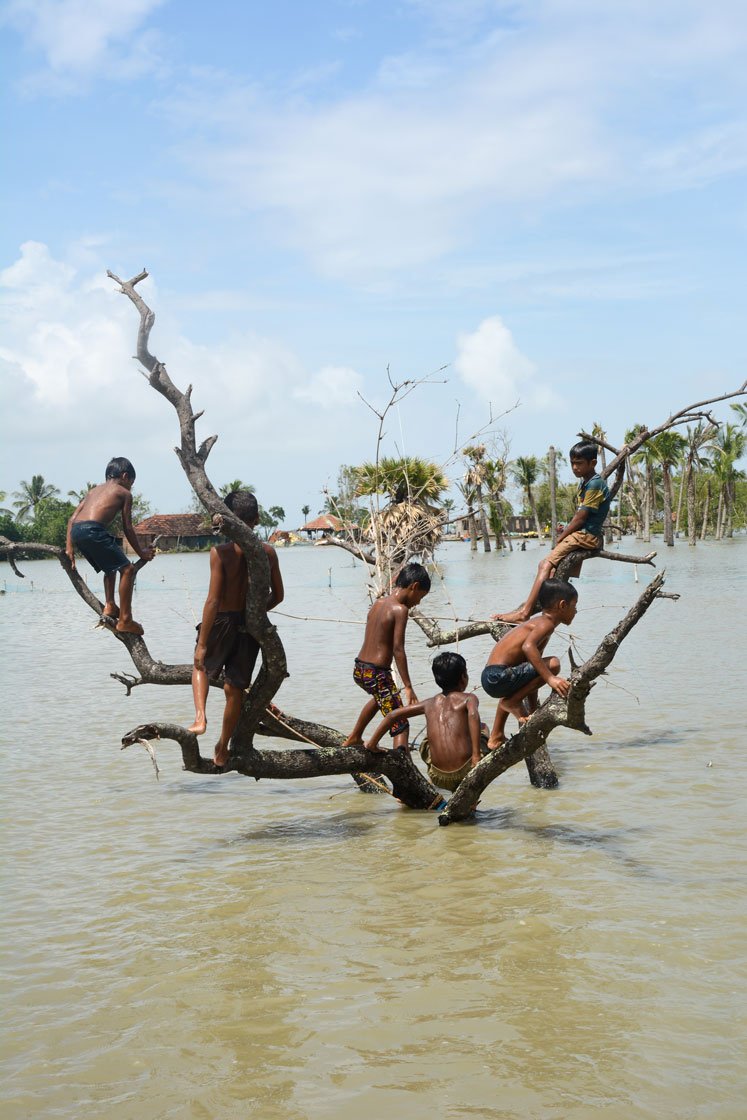
Left: Women of Kalidaspur village, Chhoto Molla Khali island, Gosaba block, returning home after collecting relief items from a local organisation. Right: Children playing during the high tide in Baliara village on Mousuni island. Their fathers work as a migrant labourers in the paddy fields of Uttarakhand.
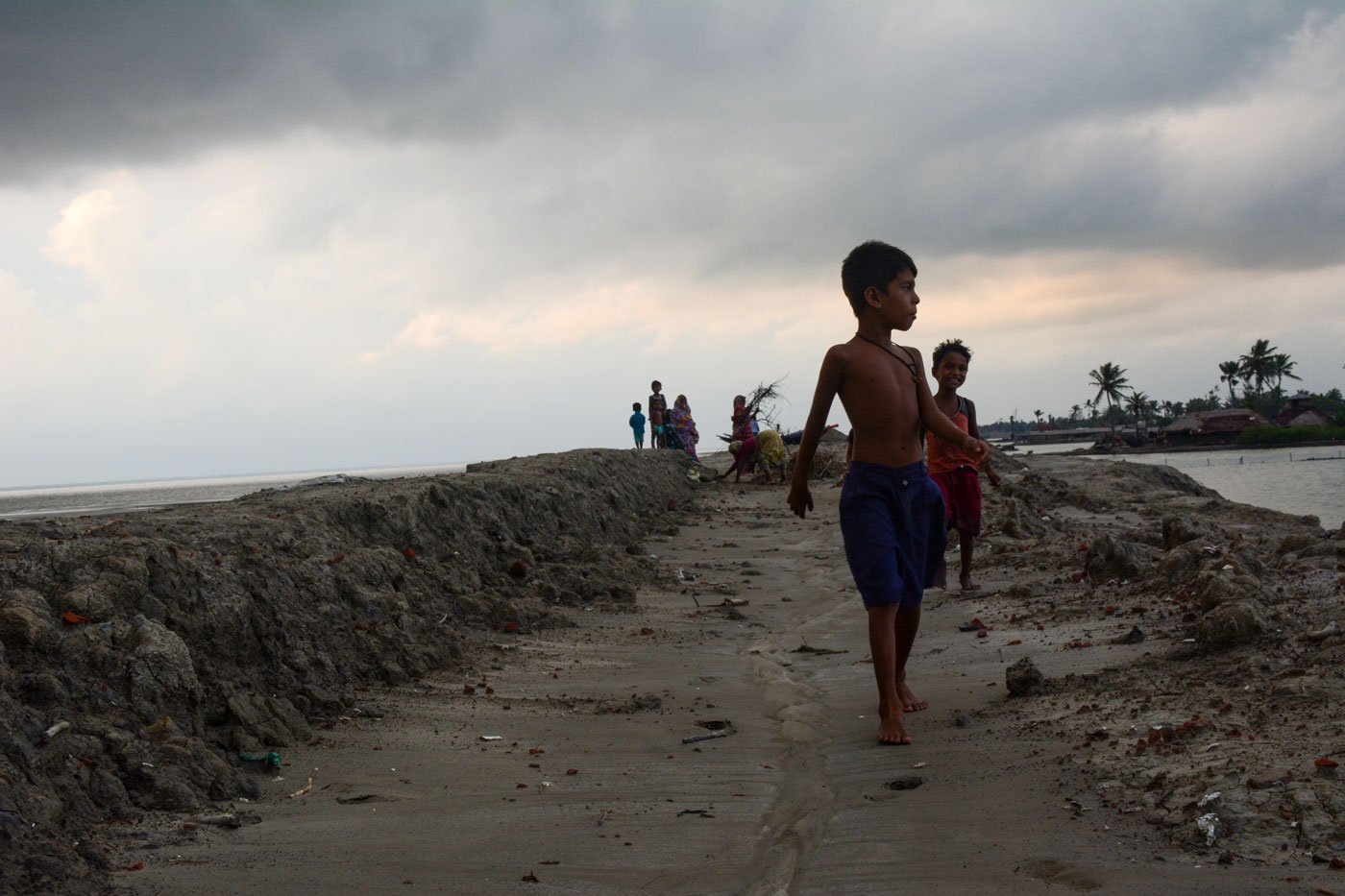
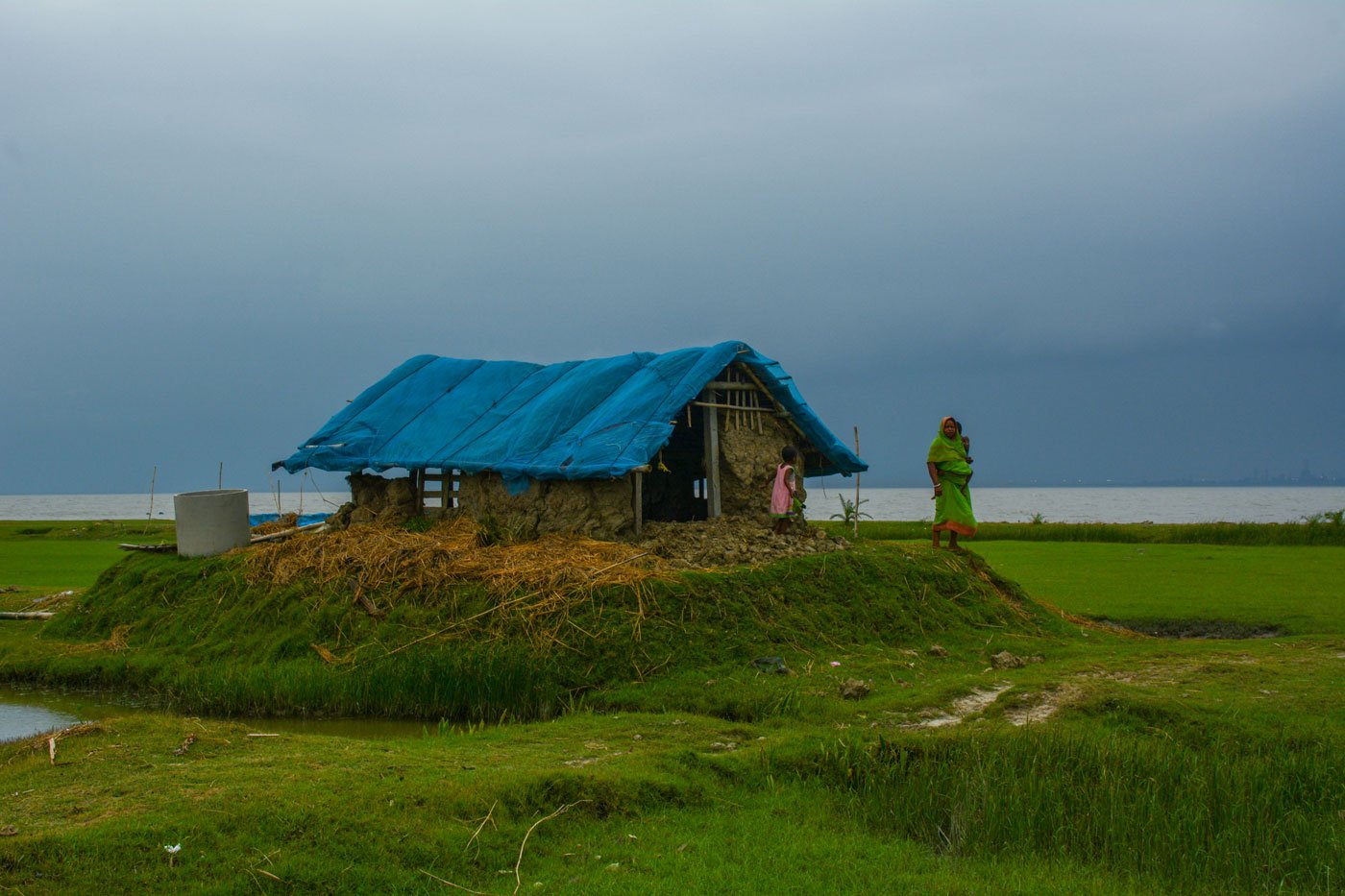
Purnima Mondal, 46, of Kakdwip island, Kakdwip block, South 24 Parganas standing in front of her thatched house with one of her children. Her husband, Provas Mondal, 52, is a construction worker in Nashik, Maharashtra. She catches fish and crabs from nearby rivers everyday.
